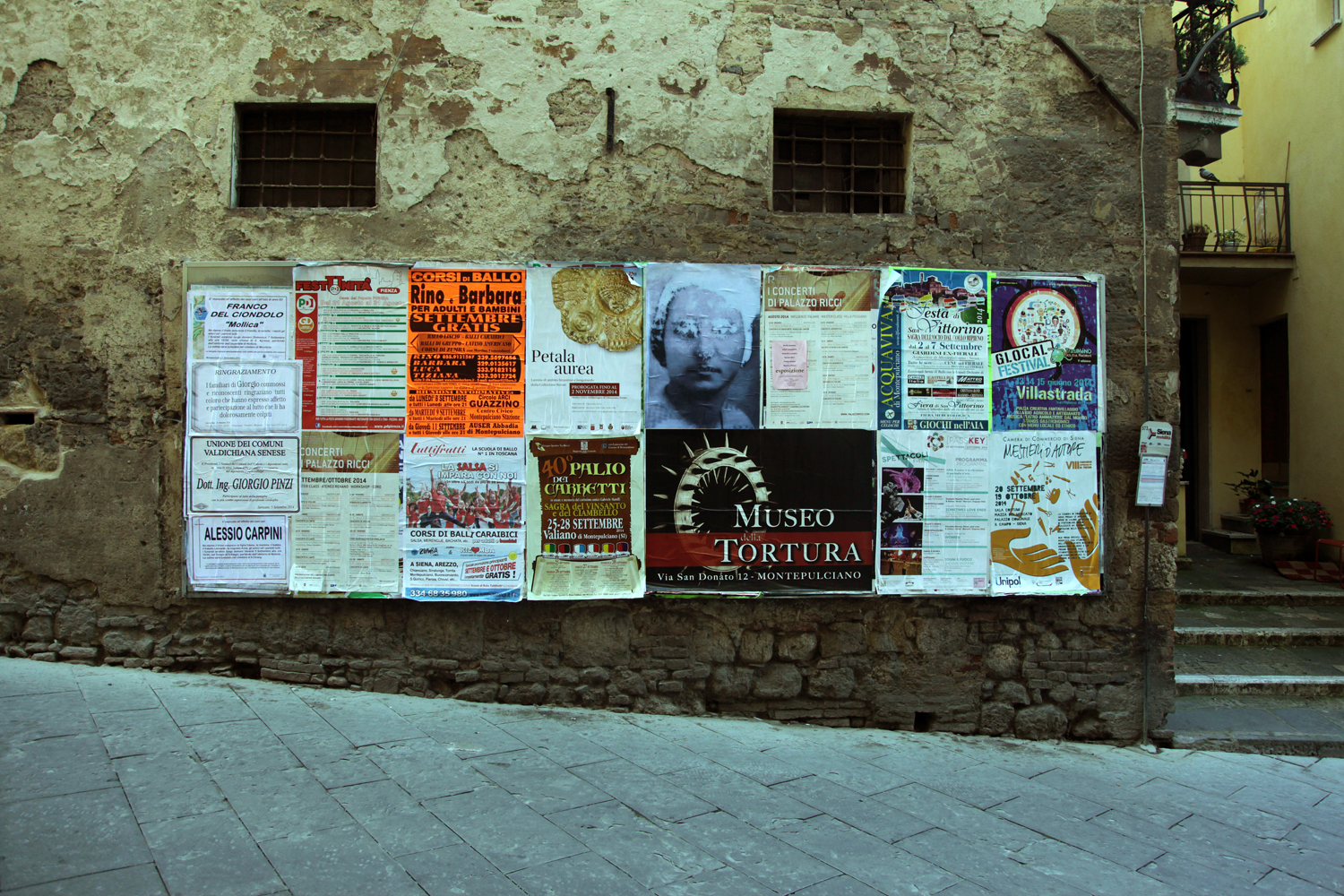
2014, campaign posters for the dead, 70 × 100 cm
Installed in 6 separate locations in Montepulciano, Italy
Memorial photo portraits embedded in gravestones are exposed to decades of changing weather conditions which transform their visual qualities.
“Cypress trees line the paths of the cemetery in Montepulciano. The photographed portraits come from the graves there. The faces of the dead have been changed over time by natural weather conditions. The image is blurred, the gaze that earlier looked out at the viewer is erased; the once lively, dark center of the iris is transformed into a contourless white. The photographs on the gravestones, which recall the appearance of the deceased and are to maintain the image of the person in a moment of life, have themselves undergone a process of decomposition. Their reproduction as posters is another step in fixing this image, to preserve the past, but the picture is already marked by decay and remains fragmented. The posters thus represent another stage in the flow of time which transforms things, people, and memories.”
Theresa Nisters
2014, Wahlplakate für Tote, 70 × 100 cm
Plakatiert an sechs verschiedenen Orten in Montepulciano, Italien
“Zypressen säumen die Wege des Friedhofs in Montepulciano. Von den dortigen Gräbern stammen die fotografierten Portraits. Die Gesichter der Verstorbenen haben sich im Laufe der Zeit durch natürliche Witterungseinflüsse verändert. Ihr Bild ist verschwommen, der einst dem Betrachter zugewandte Blick erloschen, da der ehemals lebhafte, dunkle Punkt der Iris in konturloses Weiß transformiert wurde. Die Fotografien, die auf den Grabsteinen den Anblick eines Verstorbenen in Erinnerung rufen, ihn im Moment des Lebens halten sollten, haben selbst einen Prozess der Zersetzung durchlebt. Ihre Reproduktion auf Plakaten ist ein weiterer Schritt der Fixierung, der Versuch, Vergangenes zu erhalten, doch ist das Bild schon vom Verfall gezeichnet, bleibt lückenhaft. Die Plakate repräsentieren somit eine weitere Etappe im Fluss der Zeit, der Dinge, Menschen und Erinnerungen transformiert.”
Theresa Nisters

